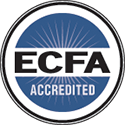The Best Ways to Prevent a Stroke

As you head into your retirement years and beyond, your health starts to become a bigger priority. And, according to the American Heart Association, every 40 seconds, someone in the country suffers a stroke. This is why many older adults may worry about stroke and want to learn if there’s anything they can do to reduce their risk. The good news is there are several stroke prevention tips, and it’s never too late to start implementing them into your life. Even small steps — at any age — can help prevent a stroke.
What is a Stroke?
A stroke is a “brain attack” and can happen to anyone, at any time. It occurs when blood flow to an area of the brain is cut off because a blood vessel gets blocked by a blood clot. How a person is affected by a stroke depends on where it occurs and how much of the brain is damaged. You might only experience temporary problems, such as weakness in your arms and legs. A larger stroke, on the other hand, can result in permanent damage like becoming paralyzed on one side of the body.
Stroke Prevention Tips
While certain factors can make you more susceptible to a stroke, such as your age and genetics, there are several things you can do today to start lowering your chance of stroke before one occurs.
- Lower your blood pressure: High blood pressure actually can quadruple your stroke risk. If you have high blood pressure, work on lowering it by reducing the amount of salt in your diet, avoiding high-cholesterol foods, eating more fruits and vegetables, getting more exercise, and quitting bad habits like smoking.
- Lose weight: Losing as little as 10 pounds can have an impact on your stroke risk.
- Exercise more: Exercise can reduce your risk of a stroke on its own, and it can also help with lowering blood pressure and weight loss.
- Drink only in moderation: Enjoy alcoholic beverages in moderation. It is recommended to have no more than one drink per day.
- Treat atrial fibrillation: If you have AFib, be sure to get it treated properly as it increases your risk of stroke by five times. Learn more about the connection between stroke and AFib from the National Stroke Association.
- Treat diabetes: Having high blood sugar damages blood vessels over time, making blood clots more likely. Make sure you understand how to control your type 2 diabetes and are properly managing your blood sugar levels.
- Quit smoking: Smoking accelerates the formation of clots by thickening your blood and increasing the amount of plaque buildup in the arteries. If you smoke, now is the time to talk to your doctor about finding the right cessation method for you.
Stroke Warning Signs
While these tips can lessen your risk of stroke, it’s still important to know the signs and symptoms of this fifth-leading cause of death in the United States. The most common warning signs of stroke include:
- Sudden numbness or weakness of the face, arm or leg. It often occurs on one side of the body only. Ask the person to smile. Does one side of the face droop? Does one arm drift downward when you ask the person to raise both arms?
- Sudden confusion or trouble speaking or understanding. Ask the person to repeat a simple phrase. Is their speech slurred or strange?
- Sudden problems with walking or a loss of balance and coordination.
- Sudden, severe headache with no known cause.
Enjoy Peace of Mind and a Healthy Future at Advent Christian Village
If you find yourself in a medical emergency, it’s important to be living in a location with qualified medical staff and a way to get help quickly. At Advent Christian Village, an emergency call system is standard in every dwelling, an EMS station is located right on campus, and there is helicopter access for aerial transport to some of the best hospitals in Florida. If you are ready for independent living in a beautiful setting that offers peace of mind for your future, we welcome you to come take a tour. Contact us today to schedule a visit or to learn more about our supportive senior care services.



